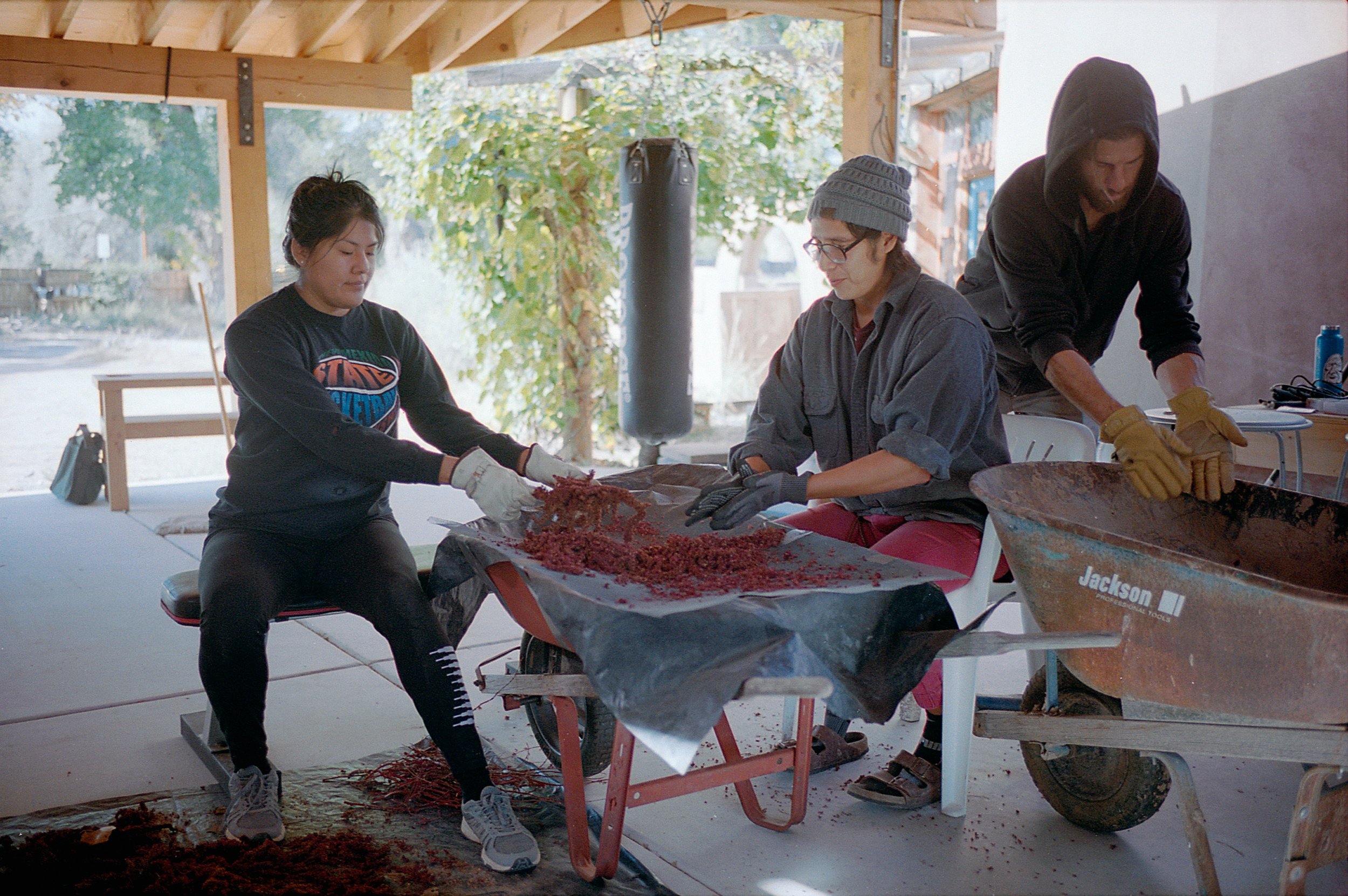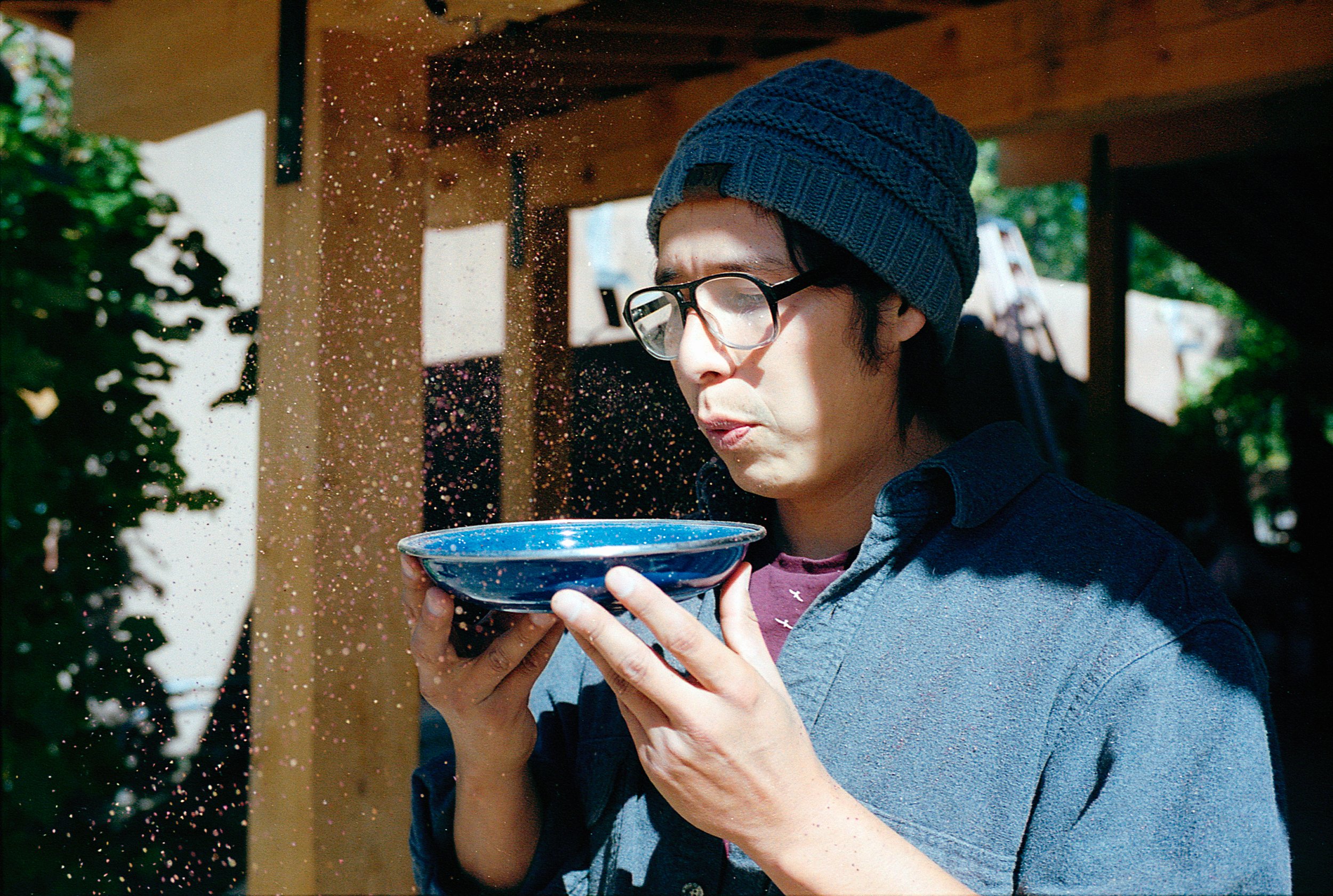KALEN GOODLUCK
THE SEED KEEPERS
In mid-October 2021, Santa Clara Pueblo seed keeper Roxanne Swentzell began processing red amaranth for its quinoa-like black grain, seeds the size of specks of sand. With the help of dedicated volunteers, she recently built an adobe seed bank at her non-profit, Flowering Tree Permaculture Institute in Española, New Mexico, which serves Santa Clara Pueblo and offers classes on farming and seed keeping. Once the shelves are installed, the thousands upon thousands of seeds stored in pots and jars will find sanctuary within its walls.
Just 24 miles to the north, Emigdio Ballon, who is Inca descendent and Quechua from Bolivia, an expert in plant genetics and breeding in high-altitude crops, has been hard at work harvesting green and red cayenne chiles at the Pueblo of Tesuque’s farm and seed bank, which he oversees. The crops are all for the pueblo, which has been rocked by draught for the last two years, yet traditional food still manages to grow.
Many heritage seeds were nearly lost when their Indigenous caregivers were torn from their homelands by US settler colonialism. These two elders, guardians of heirloom seeds, are part of a burgeoning constellation of Indigenous seed keepers who steward corn, pumpkin, squash, sunflowers, tomatoes and more—all Indigenous heirloom varieties, the result of centuries of careful breeding by Indigenous ancestral communities.
Today, seeds must be protected and passed down, just as they always have. “Now you are the keeper of those seeds,” Swentzell tells interested young ones. “Those are our crop seeds.” [253]












